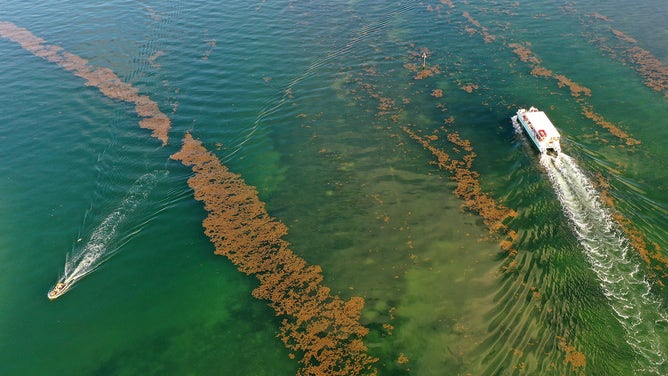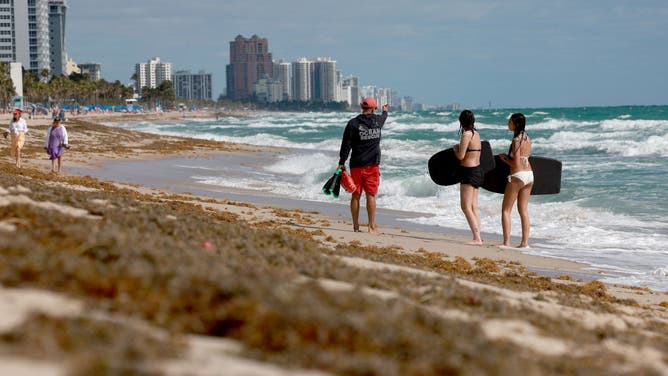Sargassum seaweed clears away but could still create problems for south Florida beachgoers
Sargassum levels in south Florida were originally expected to be historic, but now experts say the seaweed is clearing away this summer.
Smelly sargassum seaweed clearing away from Florida beaches
Sargassum levels in south Florida were originally expected to be historic, but now experts say the seaweed is clearing away this summer. FOX Weather multimedia journalist Brandy Campbell reports. June 23, 2023.
MIAMI BEACH, Fla. – Levels of sargassum seaweed in south Florida were originally expected to be historic, but now experts say the seaweed is decreasing.
Earlier this year, scientists had warned beachgoers of a 5,000-mile-long stretch of seaweed possibly taking over Florida beaches this spring and summer.
After recent assessments, however, that forecast may not come to pass.

In an aerial view, boats pass through sargassum floating on the surface of the ocean on May 18, 2023 in Marathon, Florida.
(Joe Raedle / Getty Images)
Satellite imagery taken this week shows the sargassum seaweed having mostly disappeared from the eastern Atlantic, along with the Gulf of Mexico and the Caribbean.
"It's very, very discreet pieces of seaweed, very discreet blobs, and almost nothing on the shoreline at all," South Beach Helicopters pilot Lisa Landsman told FOX Weather multimedia journalist Brandy Campbell.
‘SURPRISE’ DROP IN SARGASSUM SEAWEED FOR FIRST TIME IN OVER A DECADE, SATELLITE DATA SHOWS
Despite decreasing levels of sargassum, scientists still caution beachgoers and others who may come into contact with the seaweed of potential complications.

Beachgoers walk past seaweed that washed ashore on March 16, 2023 in Fort Lauderdale, Florida.
(Joe Raedle / Getty Images)
"We cultivated about almost 2,000 Vibrio bacteria from sargassum, from plastics and also from larvae that live in those areas," said Tracy Mincer, project lead and Wilkes Honors College professor.
Mincer and his team found 15 known types of Vibrio bacteria and one unknown type from samples collected between 2010 and 2013.
According to the Florida Department of Health, some types of Vibrio bacteria can cause diarrhea, vomiting, primary septicemia or wound infections.
Mincer noted that his team did not find a strain of Vibrio bacteria that is commonly referred to as "flesh-eating."
